Results 8,961 to 8,970 of 12096
Thread: Anandtech News
-
12-19-18, 06:05 PM #8961
Anandtech: Intel to Expand Production Capacities at Multiple Fabs
Intel this week reiterated plans to expand its production capacities in a bid to more quickly respond to increased demand. In the coming years the company intends to increase production of chips at three existing facilities and outfit a new fab with DUV and EUV tools. In addition, the company said it will develop its next-gen storage and memory technology at its manufacturing plant in New Mexico.
Back in 2017, Intel originally announced its intentions to finally furnish its Fab 42 in Arizona, which had been on hold for several years. The production facility will be used to make chips using Intel’s 7 nm manufacturing technology, which relies on DUV and EUV lithography tools. Intel has yet to announce exactly when it plans to start using this fabrication technology, but this week it said that it was making good progress in equipping the fab.
In addition, Intel intends to expand its manufacturing facilities in Oregon, Ireland, and Israel. The company has been discussing expansions of its fabs in Ireland as well as Israel for quite some time now, so it looks like the company will finally start these expansions in 2019. Meanwhile, the adding fab space to its Oregon plant – home to the company's development fabs – was unexpected and the company yet has to detail these plans.
Intel expects that the expansion of its production facilities will enable it to more quickly respond to demand increases. This faster response time will translate into higher sales, but will also increase Intel’s factory depreciation and OpEx costs.
In addition to expanding its own manufacturing capacities, Intel will also continue using third-party foundry services to make its various products when it makes business sense, including (but not limited to) entry-level SoCs or chipsets. The company collaborated with TSMC and other partners in the past, so the announcement just confirms that the company will continue to do so in the future even after it expands its own capacities, if third-party foundries offer the right technologies for particular applications.
Last but not least, Intel also made an announcement regarding the future of its storage and memory technology, which is being moved exclusively inside Intel after the company announced its intention to wind-down its long-standing joint development initiative with Micron. The chip giant will develop the tech at its manufacturing facility in New Mexico after it leaves IMFT plant in the coming quarters.
Related Reading:
- Intel Discloses Plans to Spend $5 Billion on Fab 28 Expansion in Israel
- Intel to Equip Fab 42 for 7 nm
- Intel: EUV-Enabled 7nm Process Tech is on Track
- Intel Further Boosts CapEx to Meet Demand for 14nm Chips
Source: Intel
More...
-
12-20-18, 10:10 AM #8962
Anandtech: Gemini Lake SFF PC Showdown: Intel's June Canyon (NUC7PJYH) and ECS's LIVA
Small form-factor PCs have become a major growth segment in the PC market over the last decade. In particular, UCFF (ultra-compact form-factor) PCs have become a welcome and permanent fixture in the desktop PC market, all the while they've also seen a good bit of success in the embedded and industrial market segments.
Further segmenting the UCFF market is the level of performance desired, and by proxy the CPU that gets used. Intel's two CPU architectures, Core and Atom, serve to split the market into premium and entry-level devices. And, even with the relatively lower performance of Atom-based SoCs, their aggressive prices make them an attractive proposition for economical desktop PCs as well as industrial motherboards and systems. Atom-based SoCs are long-life products, with Gemini Lake being the most recent SoC family in that product line. Today, we're taking a look at two contrasting Gemini Lake UCFF PCs - the fanless ECS LIVA Z2 and the actively-cooled Intel NUC7PJYH.
More...
-
12-20-18, 02:37 PM #8963
Anandtech: IO Data Launches GigaCrysta 24-inch 1080p Monitors at 240 Hz with HDR10 Su
IO Data, a Japanese display vendor, has quietly started to sell gaming monitors featuring a sub-1 ms response time. The GigaCrysta family of displays are currently available only in Japan, but since the LCD panels used by IO Data are available to other monitors manufacturers as well, expect to see similar products arrive in other markets shortly.
The IO Data GigaCrysta-series monitors in question are based on 24/24.5-inch TN panels featuring a Full-HD resolution, 60/144/240 Hz refresh rates, and as their main selling point, a 0.6 ms – 0.8 ms GtG response time when the overdrive function is activated (see exact specs in the table below). Other characteristics of the display are just what you come to expect from fast TN panels, including 250, 300 or 400 nits maximum brightness, a 1000:1 contrast ratio, 170°/160° horizontal/vertical viewing angles, and so on.
The GigaCrysta monitors from IO Data are clearly aimed at gamers, so they support special modes that makes dark scenes look brighter, a mode that reduces response time by bypassing internal image processing as well as gamma settings for different genres. The LCDs also support HDR10 technology, though actual HDR experience on these devices can hardly be "full" considering their relatively low peak brightness. What is puzzling however is that neither of the displays supports a dynamic refresh rate technology, something that is expected from gaming LCDs by default these days.
As far as connectivity is concerned, all of IO Data’s GigaCrysta LCDs have a DisplayPort input to connect to a PC, at least two HDMI inputs to connect a couple of game consoles (PbP and PiP capabilities are also supported), and on two models, a D-Sub to maintain compatibility with legady systems. As an added bonus, the monitors come with bundled remotes that can be used to control TVs as well as multimedia playback via HDMI-CEC. When it comes to audio, the displays are outfitted with stereo speakers, audio line-in, as well as a line-out for headphones.
IO Data is not the first company to introduce monitors with sub-1 ms response time. Acer recently launched a lineup of ultra-fast LCDs for gamers with similar specs too. What is important is that neither Acer nor IO Data produce display panels themselves and therefore such panels will be eventually used by other monitor vendors as well.IO Data's GigaCrysta Gaming Displays EX-LDGC251UTB LDGC241HTB2 EX-LDGC251TB Panel 24.5" TN 24" TN 24.5" TN Native Resolution 1920 × 1080 Maximum Refresh Rate 240 Hz 144 Hz 60 Hz Dynamic Refresh Tech - Range - - - Brightness 400 cd/m² 350 cd/m² 250 cd/m² Contrast 1000:1 Viewing Angles 170°/160° horizontal/vertical Response Time 0.6 ms 0.7 ms 0.8 ms Pixel Pitch ~0.28 mm² ~0.27 mm² ~0.28 mm² Pixel Density ~90 PPI Color Gamut Support sRGB Inputs 1×DP
2×HDMI1×DP
1×D-Sub
3×HDMI1×DP
1×D-Sub
2×HDMIAudio 2×2W speakers VESA Mounts 100 × 100 mm Warranty 3 years Additional Information Link Link Link Retail Price in Japan ?42,800
($380)?29,799
($265)?15,980
($142)
IO Data’s GigaCrysta-series displays with a sub-1 ms response time are currently available at Amazon.co.jp for $142 - $380 with VAT.
Related Reading:
- Acer Unveils KG1 Displays with Sub-1ms Response Time
- AOC to Launch Curved QHD Displays with 0.5 ms Response Time in 2018
- Acer XZ1-Series Curved Gaming Displays: WQHD, 144 Hz, FreeSync, HDR10
- Acer Announces Nitro XV273K Monitor: 4Kp144, DisplayHDR 400, FreeSync
- Acer Unveils Predator XB273K 4Kp144 DisplayHDR 400 Gaming LCD
Source: PC Watch
More...
-
12-20-18, 02:37 PM #8964
Anandtech: Qualcomm Granted Injunction Against Apple In Germany: iPhone 7 & 8 Sales S
Today Qualcomm was granted an injunction against Apple, allowing for a ban of certain iPhone models in Germany. The announcement comes only a little over a week after a Chinese court ruled in a similar fashion against Apple, on the case that the company is infringing Qualcomm patents.
The case in Germany is on the matter of infringing certain patents that cover the functioning of envelope tracking (ET). ET is a key component in the RF front-end of a cellular system, and its usage notably increases the power efficiency of the system by avoiding unnecessary losses on the side of the power amplifier.
Qualcomm claims Apple’s implementation in certain devices infringes on their patents – in this case we’re talking about international models of the iPhone 7 and iPhone 8 which rely on Intel modems and a Qorvo ET chip.
The ban is currently not yet active, as Qualcomm will need to post a bond of €668.4m before the order can be enforced. Meanwhile, Apple is naturally appealing the injunction. The interesting aspect here is that Apple is removing the iPhone 7 & 8 from its stores in Germany, although this doesn’t mean that the phones won’t be available anymore as they will remain on sale through their resellers. Apple’s statements, as quoted by Reuters:
“We are of course disappointed by this verdict and we plan to appeal,”Qorvo chief intellectual property counsel also disputes the court’s findings:
“All iPhone models remain available to customers through carriers and resellers in 4,300 locations across Germany. During the appeal process, iPhone 7 and iPhone 8 models will not be available at Apple’s 15 retail stores in Germany. iPhone XS, iPhone XS Max and iPhone XR will remain available in all our stores.”
“We believe our envelope tracking chip does not infringe the patent in suit, and the court would have come to a different conclusion if it had considered all the evidence,”Related Reading:- The iPhone XS & XS Max Review: Unveiling the Silicon Secrets
- The 2018 Apple iPad Pro (11-Inch) Review: Doubling Down On Performance
- Apple Announces New 11" and 12.9" iPad Pros with A12X SoC
- Apple Announces 2018 MacBook Air: Entry-Level Laptop Gets Essential Refresh
- Apple Announces Q4 FY 2018 Earnings: Revenue Up, Sales Not
More...
-
12-20-18, 03:14 PM #8965
Anandtech: LG to Demo UltraWide 38-Inch 144Hz Gaming & 49-Inch Workstation Displays a
LG this week announced that it would demonstrate its next-generation ultra-wide curved displays at CES early next month. LG’s UltraGear 38GL950G will be one of the industry’s first 38-inch monitors with a 144 Hz refresh rate, whereas the UltraWide 49WL95C LCD will be the company’s largest monitor for prosumers and professionals.
One of The First 38-Inch WQHD+ Monitors with a 144 Hz Refresh Rate
The UltraGear 38GL950G is yet another addition to LG’s family of displays tailored for gamers. The LCD is based on a 38-inch curved panel featuring a 3840×1600 resolution (21:9 aspect ratio), 450 nits peak brightness, and a 144 Hz refresh rate. The display features LG’s Nano IPS treatment that fine-tunes the spectral output of the LED backlighting in a bid to absorb excess light wavelengths and improve the intensity, purity, as well as the accuracy of the on-screen colors. The display can reproduce 98% of the DCI-P3 gamut, which is in line with many professional-grade monitors.
Being aimed at gamers, the UltraGear 38GL950G supports NVIDIA’s G-Sync dynamic refresh rate technology, as well as LG’s proprietary gaming features (crosshair overlay, overdrive controls, gamma tuning on dark scenes, etc.). In addition, the new display supports LG’s Sphere Lighting that adds ambient lighting effects akin to Philips’ amBX and AmbiLight. As for connectivity, the display features one DisplayPort, one HDMI input, as well as a dual-port USB 3.0 hub.
LG’s UltraGear 38GL950G will be one of the industry’s first 38-inch curved WQHD+ monitors featuring a 144 Hz refresh rate when it becomes available sometimes next year. At present, LG only offers 34-inch displays with such a high refresh rate. Meanwhile, typical gaming displays use 24 or 27-inch panels.
Another 49-Inch Monitor
LG was among the first to launch ultra-wide 37.5-inch LCDs for entertainment and productivity applications as well as 42.5-inch displays for prosumers. However, the company is a bit behind rivals with ultra-wide 49-inch monitors. This is going to change at CES, where LG intends to show its giant UltraWide 49WL95 LCD.
Specification wise, the UltraWide 49WL95 will be similar to its competitors with its 5120×1440 resolution, 350 nits peak brightness, 99% coverage of the sRGB color space, and so on. LG will position its 49-inch display as a replacement for two 27-inch QHD LCDs (a configuration often used by professionals and prosumers), so expect the product to be priced accordingly.
Among the key selling features of the monitor will be its USB Type-C docking capabilities with 85 W of USB power delivery (enough to feed most 15-inch laptops), an ambient light sensor to regulate brightness depending on the environmental brightness to keep power consumption in check, and two 10 W stereo speakers. As for general connectivity, the monitor will feature one DisplayPort, two HDMI inputs, and a quad-port USB 3.0 hub.
Related Reading:LG's Upcoming UltraGear and UltraWide Displays UltraGear 38GL950G UltraWide 49WL95 Panel 38" IPS 49" Native Resolution 3840 × 1600 5120 × 1440 Maximum Refresh Rate 144 Hz 60 Hz (?) Dynamic Refresh Rate G-Sync - Response Time ? ? Brightness 450 cd/m² 350 cd/m² Contrast ? ? Backlighting LED with Nano IPS LED Viewing Angles 178°/178° horizontal/vertical Curvature ? ? Aspect Ratio 21:9 32:9 (3.56:1) Color Gamut DCI-P3: 98% sRGB: 99% Pixel Pitch 0.232 mm² 0.234 mm² Pixel Density 109 PPI 108 PPI Inputs 1 × DisplayPort 1.2
1 × HDMI 2.01 × DisplayPort 1.2
1 × USB Type-C
2 × HDMI 2.0Audio - 2 × 10 W USB Hub 2 × USB 3.0 Type-A connectors 4 × USB 3.0 Type-A connectors MSRP ? ?
- LG’s 34UC89G 21:9 Curved Display with G-Sync, 144 to 166 Hz, Available for $999
- Dell U4919DW Curved Display Unveiled: 49 Inches, 5120x1440
- Philips Preps 499P9H Curved 49-Inch 5K Display with USB-C Docking & Webcam
- ASUS Demonstrates ProArt PA34V Professional Curved UWQHD Display with TB3
- Samsung Unveils CJ79 & CJ89 Curved LCDs: Quantum Dots, TB3 & USB-C
- MSI’s 49” Optix Curved Display and Oculux 25” High Refresh Monitors Announced
- HP 2018 Envy 34-Inch Curved All-in-One Gets Cozier
- Dell’s UltraSharp U3818DW Now Available: Curved 37.5”, 3840×1600, USB-C, $1499
Source: LG
More...
-
12-21-18, 08:18 AM #8966
Anandtech: Ulefone Unveils Armor 6 Ruggized Smartphone: 6.2-Inch IP68 Body With Helio
Ulefone this week introduced its new high-end shockproof and waterproof smartphone. Dubbed the Rugger Armor 6, the ruggized phone combines an IP68-rated chassis, a large display, multiple special-purpose sensors, and a high-performance SoC. Clearly keying in on a specific market segment for the new phone, the Armor 6 will also ship with multiple pre-loaded applications that are intended to be useful during traveling or just in various harsh locales.
Broadly speaking, most rugged smartphones have to make trade-offs to reach their design goals, such as using an inelegant chassis, mediocre hardware inside, or rather ordinary displays. While the general reasons behind such design decisions are more or less obvious (e.g., keep their BOM costs and heat soak in check), there are many people who prefer to have a rugged smartphone without making quite so many compromises. The Ulefone Armor 6 in turn is looking to carve out a niche for itself in that market by offering a rugged design with above-average hardware.
On the outside, the Armor 6 has a a rather decent looking chassis featuring a die cast frame covered with protective rubber and red or grey metallic inlays. The enclosure is rated to handle drops from 1.2 meters, submersion into water (up to 1.5 meters for up to 60 minutes), thermal shocks, corrosive environments, and so on. Meanwhile, framing a 6.2-inch 2246×1080 LCD display protected using Corning’s Gorilla Glass 5, the Armor 6 is generally pretty large and heavy: it is 160 mm tall, 13.3 mm thick, and weighs 228 grams. All of which makes the Armor 6 a lot larger than standard consumer smartphones, but is fairly typical for this market segment.
Moving on to the insides of the Ulefone Armor 6. The smartphone is powered by MediaTek’s Helio P60 SoC, a Quad Cortex-A73 design that also incorporates four Cortex-A53 cores as well as ARM's Mali-G72MP3 GPU. The SoC is paired with 6 GB of DRAM and 128 GB of NAND flash storage. Many recent ruggedized smartphones have been based on cheaper SoCs with low-power Cortex-A53 CPU cores, so the Armor 6 is notable for its performance potential. As it appears, Ulefone decided not to cut corners and used a relatively high-performance SoC with Cortex-A73 cores in order to ensure that owners of the handset can use all applications they need to with a comfortable level of performance.
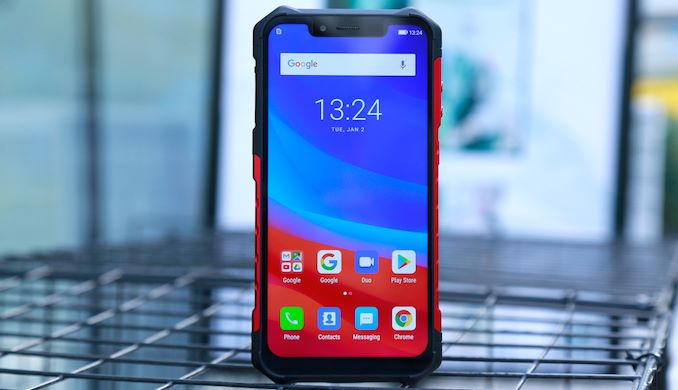
As far as connectivity is concerned, the handset supports 30 frequency bands as well as GPS/AGPS+GLONASS+Beidou positioning. As a result it can be used in 90% areas over the world, which is particularly useful for people who travel to various remote corners of the globe. As for local connectivity, the Armor 6 supports 802.11ac Wi-Fi, Bluetooth 4.2, NFC, as well as a USB 2.0 Type-C port for data transfers and charging of its 5000 mAh battery. Speaking of charging, the phone also supports 10 W Qi wireless charging.
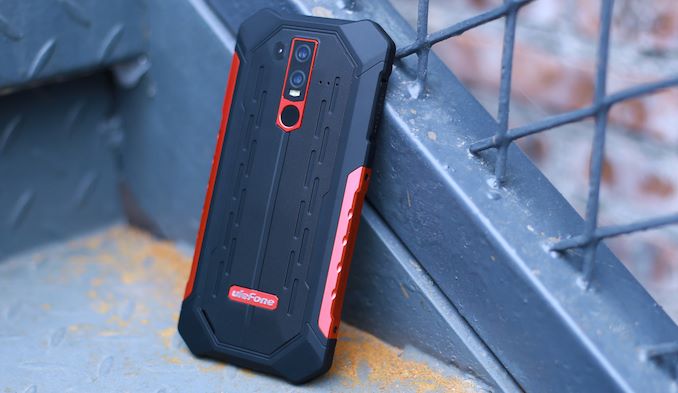
One particularly interesting feature of the Armor 6 are its advanced imaging capabilities, which are comprised of a 16 MP + 8 MP main camera with an ƒ/2.0 large aperture and dual LED flash, as well as an 8 MP selfie camera with an ƒ/2.0 large aperture. In order to improve the resulting image quality and boost the effective resolution of photos taken with the phone, it's configured to use both cameras at once, combining their inputs using a special algorithm designed by Arcsoft and running on the SoC ISP. While a neat feature in and of itself, the unfortunate side-effect is that Ulefone is advertising this higher interpolated resolution as the native resolution of the camera system, which in practice isn't the case.
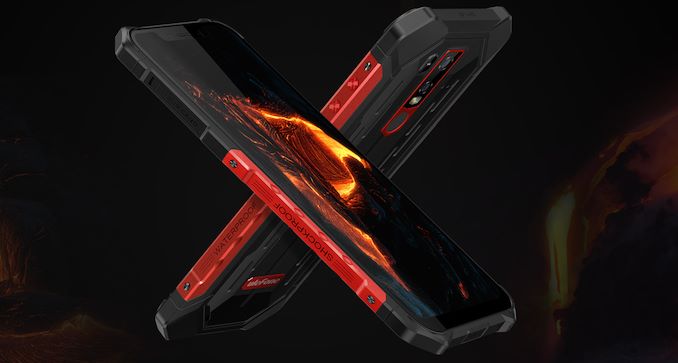
Meanwhile when it comes to sensors, the Ulefone Armor 6 has plenty that its target audience should appreciate. Among other things, the smartphone is equipped with a p-sensor, an ultraviolet sensor, a coulometer, along with the other more common sensors found in current-generation smartphones. The smartphone comes pre-loaded with multiple special-purpose applications (e.g., Sound Meter, Pedometer, Bubble Level, Barometer, Protractor, UV Light Tester, Plumb Bob, etc.) that take advantage of the sensors, making it easier to access the phone's full capabilities.
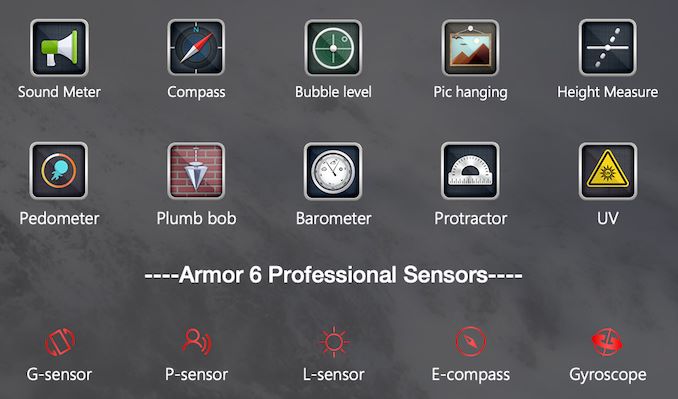
Ulefone said that its Armor 6 smartphone will ship in 2019, though they aren't supplying an exact timeframe. The company also hasn't yet announced a price, though if it's any pattern, the company’s current-gen high-end rugged smartphones run for $350 – $370 in the US.The Ulefone Armor 6 Ruggedized Smartphone Specifications Display 6.2" 2246×1080 (402 ppi)
Corning Gorilla Glass 5SoC MediaTek Helio P60 (MT6771)
4 × ARM Cortex-A73 at 2 GHz
4 × ARM Cortex-A53 at ? GHz
ARM Mali-G72 with 3 EUsRAM 6 GB RAM Storage 128 GB + microSD Local Connectivity Wi-Fi 802.11ac Wi-Fi Bluetooth Bluetooth 4.2 Data/Charging USB 2.0 Type-C + Qi Wireless Connectivity (10 W) Audio No TRRS connector
USB Type-C to 3.5 mm headset adapter is bundledNFC Yes, Google Pay Network 2G GSM: 1900/1800/850/900 (B2/3/5/8)
2G CDMA: 850/900 (BC0/BC1)
3G WCDMA: 2100/1900/1700/850/900 (B1/2/4/5/8)
3G TDSCDMA: 2015/1900 (B34/B39)
4G FDD-LTE: 2100/1900/1800/1700/850/2600/900/700/700/850/800/700/700 (B1/2/3/4/5/7/8/12/17/19/20/28A/28B)
4G TDD-LTE: 2015/2500/1900/2300/2500 (B34/38/39/40/41)LTE Down: 300 Mb/s
Up: 150 Mb/sNavigation GPS, GLONASS, Beidou, digital compass Rear Camera 16 MP (interpolated to 21 MP) + 8 MP (interpolated to 13 MP)
ƒ/2.0 large aperture
Dual LED flashFront Camera 8 MP (interpolated to 13MP)
ƒ/2.0 large apertureBattery Capacity 5000 mAh Expected Life Standby Time: 440 hours
Talk Time: 25 hours
Music Time: 34 hours
Video Time: 9 hoursSIM Size Nano SIM + Nano Sim Sensors G-sensor, P-Sensor, L-sensor, Gyro, Electronic Compass, Touch Sensor, Coulometer Biometric Security Fingerprint Capacitive touch sensor with 0.1 s response speed Facial Recognition Yes, 0.2 ms response speed Dimensions Height 160 mm Width 83 mm Thickness 13.3 mm Weight 228 grams Colors Black + Grey or Black + Red Protection Drop 1.2 meters Ingress Protection IP68: Sand, dust, dirt, water resistant
Waterproof: Up to 1.5M for 60 minutesThermal Shock Operational: -20°C (-4°F) to 60°C (140°F) for up to 6-8 hours
Non-Operational: -40°C (-40°F) to 80°C (176°F)Low Pressure 57 kPa at 25°C for 4 hours Humidity 50% - 90% at 23°C - 60°C for 6-8 hours Acidic Atmosphere 4.17 PH at 35°C for 2 hours spraying/22 hours storage Solar Radiation 1120 W/m² at 49°C for 20 hours Military Standard Tests MIL SPEC 810G OS Google Android 8.1 Oreo Launch Countries ? Price ?
Related Reading:
- The Ulefone T2 Pro Hands-On: A 6.7-inch Stunner Smartphone
- Cat at MWC 2018: S61 Smartphone with FLIR Cam, Laser Distance Measurer, Air Quality Sensor
- Rugged Hands-On: The Land Rover 'Explore' Smartphone
Source: Ulefone
More...
-
12-21-18, 10:58 AM #8967
Anandtech: IBM to use Samsung 7nm EUV for Next-Gen POWER and z CPUs
IBM has announced it has signed an agreement with Samsung Foundry to produce its next-generation processors. This includes processors for IBM Power Systems, IBM z, and LinuxONE systems, all using Samsung’s 7 nm fabrication process that uses extreme ultraviolet lithography (EUVL). The decision comes as no surprise as GlobalFoundries, IBM’s manufacturing partner for CPUs, decided to abandon development of 7 nm and more advanced technologies. IBM and Globalfroundies manufacturing agreement, whereby fabs, IP, and $$ were given to GlobalFoundries to make IBM's CPUs, ends this month.
IBM and Samsung have collaborated for 15 years researching and developing various semiconductor production materials and technologies as part of IBM’s Research Alliance. Considering the fact that Samsung’s and GlobalFoundries’ fabrication processes rely on R&D conducted internally and as part of IBM’s Research Alliance, IBM developers know what to expect from these technologies. IBM said that under the current agreement, the two companies will expand and extend the strategic partnership, but did not elaborate whether this means development of a custom version of Samsung’s 7LPP manufacturing process for IBM. At present, the companies call the tech to be used for IBM’s chips as “7 nm EUV”.
IBM has traditionally used custom manufacturing processes to build its IBM POWER processors for servers and IBM z CPUs for mission-critical mainframes. IBM’s chips combine a high core count and complexity with very high frequencies, which is why the company required highly-custom process technologies that relied on SOI wafers, featured an increased amount of metal layers, a reduced transistor density, and other adjustments. Typically, technologies fine-tuned for IBM CPUs by IBM Microelectronics and then GlobalFoundries were only used for these products (partly because of IP and partly because of costs).
The two companies also did not disclose what exactly Samsung Foundry will produce for IBM. Based on IBM’s current roadmap for POWER processors, its 2019 CPUs will be made by GlobalFoundries using a custom 14 nm fabrication process. Meanwhile, the company’s next-gen POWER10 products set to hit the market in 2020 or later will allegedly use a different manufacturing tech. Meanwhile, IBM’s next-gen z15 processors for IBM Z mainframes, which are not introduced on a per-annum cadence, will most likely be fabbed by Samsung.
Samsung Foundry recently started to use its 7LPP manufacturing tech for high-volume production of undisclosed chips. This fabrication process uses EUVL tools for select layers only in a bid to reduce cycle times.
Related Reading- GlobalFoundries Weds FinFET and SOI in 14HP Process Tech for IBM z14 CPUs
- Hot Chips: IBM's Next Generation z14 CPU Mainframe Live Blog (5pm PT, 12am UTC)
- Assessing IBM's POWER8, Part 2: Server Applications on OpenPOWER
- GlobalFoundries Stops All 7nm Development: Opts To Focus on Specialized Processes
- Samsung Starts Mass Production of Chips Using Its 7nm EUV Process Tech
Sources: IBM, Samsung
More...
-
12-21-18, 10:58 AM #8968
Anandtech: AMD Athlon 220GE and Athlon 240GE with Radeon Vega Graphics Launched
AMD has announced availability of the Athlon 220GE and Athlon 240GE processors it announced back in September. Based on the Zen microarchitecture and featuring built-in Radeon Vega graphics, these parts are priced well below $100 per unit, focusing on the mass market, and the new chips have a TDP of 35 W.
Coming on the heels of the Athlon 200GE chip introduced earlier this year, the new Athlon 220GE and Athlon 240GE processors increase the performance of AMD’s inexpensive CPUs and make the company’s sub-$100 desktop product line more complete. Just like the Athlon 200GE, the new 220GE and 240GE models integrate two SMT-enabled Zen cores operating at 3.4 and 3.5 GHz frequency (respectively), a Radeon Vega iGPU featuring 192 stream processors operating at 1 GHz, 1 MB L2 cache, 4 MB L3 cache, a dual-channel DDR4-2667 memory controller, and so on.
Higher clocks enable AMD’s new Athlon processors to better compete against Intel’s entry-level Celeron and Pentium processors for the market of cheap PCs that do not need a lot of compute horsepower yet benefit from a high integration as well as a low TDP.
The new Athlon 220GE and Athlon 240GE CPUs are drop-in compatible with motherboards based on AMD’s 300 and 400-series chipsets that support high-performance NVMe SSDs, USB 3.1 Gen 2 interface, 4Kp60 display output(s) and so forth. The same AM4 platforms are compatible with AMD’s higher-performance Ryzen processors, providing owners of the new Athlon-based systems an upgrade path to eight-core Ryzen 7 CPUs.
Both new processors will be available for order from leading retailers shortly, AMD said. When it comes to pricing, the new Athlon 220GE (3.4 GHz) sits right above the model 200GE (3.2 GHz) with a $65 price tag. Meanwhile, the dual-core Athlon 240GE (3.5 GHz) costs $75, or $24 less than the quad-core Ryzen 3 2200G, which offers significantly more compute and graphics horsepower.AMD's Retail Stack AnandTech Zen Cores
w/HTBase
FreqTurbo
FreqVega
CUsTDP MSRP Ryzen 7 2700X Zen+ 8 / 16 3700 4300 - 105W $329 Ryzen 7 2700 Zen+ 8 / 16 3200 4100 - 65W $299 Ryzen 5 2600X Zen+ 6 / 12 3600 4200 - 95W $229 Ryzen 5 2600 Zen+ 6 / 12 3400 3900 - 65W $199 Ryzen 5 1500X* Zen 4 / 8 3500 3700 - 65W $159 Ryzen 5 2400G Zen 4 / 8 3600 3900 11 65W $169 Ryzen 3 1300X* Zen 4 / 4 3500 3700 - 65W $114 Ryzen 3 2200G Zen 4 / 4 3500 3700 8 65W $99 Athlon 240GE Zen 2 / 4 3500 - 3 35 W $75** Athlon 220GE Zen 2 / 4 3400 - 3 35 W $65** Athlon 200GE Zen 2 / 4 3200 - 3 35W $55 *The 2500X and 2300X have been released, but not at retail. We should have a review soon
** Retail listings of 220GE and 240GE expected 'soon'
Buy AMD Athlon 200GE on Amazon.com
Related Reading- AMD’s Athlon 200GE Processors Now Available
- AMD Announces New $55 Low-Power Processor: Athlon 200GE
- Two New 35W Raven Ridge Parts: AMD Athlon 200GE and Athlon Pro 200GE
- AMD Ryzen 5 2400G and Ryzen 3 2200G Core Frequency Scaling: An Analysis
- AMD Announces Four New Ryzen CPUs: 2700E, 2600E, 2500X, and 2300X
Source: AMD
More...
-
12-21-18, 12:30 PM #8969
Anandtech: New 8K OLED Displays for Tablets and Laptops: 8.3 and 13.3 Inches
Semiconductor Energy Laboratory, a technology developer from Japan, has developed the industry’s first 8.3 and 13.3-inch OLED displays featuring an 8K resolution. The monitors use crystalline oxide semiconductor technology and they are likely preliminary designs for future product commercialization. The company also recently showcased a bendable 8.6-inch OLED panel, potentially for a foldable tablet or smartphone.
Both of SEL’s OLED panels featuring a 7680×4320 resolution use a color filter that relies on CAAC-IGZO (c-axis aligned crystalline indium gallium zinc oxide) material. The 8.3-inch 8K panel can boast with a rather high pixel density of 1061 pixels per inch and has a refresh rate of 60 Hz. The larger 13.3-inch 8K panel features a pixel density of 662 PPI, but has a refresh rate of 120 Hz, which is particularly high for an OLED. The 8.3-inch 8Kp60 OLED was demonstrated last month at SEMICON Japan, whereas the 13.3-inch 8Kp120 OLED currently exists only in SEL’s labs.Size Resolution PPI Refresh
RateBendy 8.3-inch 3840 x 2160 1062 60 Hz - 13.3-inch 3840 x 2160 663 120 Hz - 8.6-inch 1900 x 1200 263 60 Hz Yes
The 8.3-inch display is 1062 PPI. For comparison, Sony's Z5 Premium with a 5.5-inch display and 4K resolution was 801 PPI. At 8.3-inches, it's a little big for a smartphone, so it will be interesting if that size can come down a little bit. 8K at 6.5-inches would be 1355 PPI, so the power draw would be quite interesting.
Other notable developments of SEL include a foldable 8.6-inch OLED panel with an 1920×1200 resolution rated for 10,000 bend/unbend cycles (that is 27.4 folds per day over a year) as well as OLED panels capable of displaying the BT.2020 color space.
The primary focus of Semiconductor Energy Laboratory’s work is development of crystalline oxide semiconductor technologies for various applications including chips and displays. CAAC-IGZO is recognized as one of next-generation materials that enable high-resolution low-power displays, so SEL is working on its practical implementations. Being an IP-licensing company, SEL does not have its own production capacities, so it will need a partner to make CAAC-IGZO-based 8K OLEDs a reality.
Related Reading- Samsung Begins Sales of 65-Inch Q900R 8K UHDTV in the UK
- Samsung Starts to Take Pre-Orders on 85-Inch Q900 8K UHDTV
- Samsung’s One Invisible Connection: 75 Gbps and 230W in a Ultra Thin Cable
- Sharp’s 8K UHD TV Available in Japan, Listed in Europe for €11,899
- Sharp Announces 2nd Gen 8K UHD TVs at IFA
- AUO to Ship 8K UHD TV Panels in Coming Months
- Philips Demos 328P8K: 8K UHD LCD with Webcam, Docking, Coming in 2018
- Dell’s 32-inch 8K UP3218K Display Now For Sale: Check Your Wallet
Source: Optronics Online
More...
-
12-25-18, 02:07 PM #8970
Anandtech: Huawei Hits 200 Million Smartphone Sales in 2018
Huawei has announced today that shipments of its smartphones in 2018 have exceeded 200 million units. In recent months the company became the No. 2 supplier of smartphones, ahead of Apple and behind Samsung, marking a remarkable progress Huawei has made since it entered this market eight years ago.
Huawei launched its first mobile phone in 2003, primarily targeting developing economies as companies like Nokia and Motorola dominated established markets back then. According to Huawei, it was successful enough to sell its consumer business unit for some $10 billion to Motorola, yet never did. The company did not see many opportunities on the smartphone market till 2009, when it introduced its first smartphone (the U8220) which also targeted the low-end of the market. The company changed its approach to smartphone design and consumer business in general with the subsequent generations, introducing rather successful devices and then its EMUI for Android in 2012. Somewhere along the line the company partnered with Leica for smartphone cameras to become known known for its smartphones imaging capabilities.
To tell the long story short, sales of Huawei smartphones increased 66 times from 2010, a compound annual growth rate of 69% (or 39% if you exclude the low base of 2010). Back in Q3 alone, according to IDC, Huawei sold 52 million smartphones, that is below 72 million sold by Samsung and above 47 million sold by Apple.
Because of the trade dispute between China and the US, Huawei smartphones have issues in the US, obviously capping the company’s sales and restricting the markets. Nevertheless, having sold 200 million units this year, the company is sitting comfortably at the No. 2 position with only Samsung ahead of it.
Huawei's Smartphones in 2018
The 200 million unit value includes all Huawei branded and Honor branded smartphones, although the two companies are managed under different umbrellas internally. Honor states that it would be #5 worldwide by itself, to give some perspective. Throughout 2018, both companies have launched a number of compelling smartphones to whet the appetite.
In October we saw the launch of the Mate 20, the Mate 20 Pro, the Mate 20 X, and the Mate 20 RS, with the first two of those being the key drivers for Huawei's flagship line. These two devices use the latest 7nm Kirin 980 chipset, with a large focus on AI compute performance.
You can read our Huawei Mate 20 and Mate 20 Pro review here, along with our Kirin 980 deep-dive analysis.
The Mate 20 Lite, using the Kirin 710, also debuted in Q3.
Earlier in the year, Huawei launched the P20 and the P20 Pro. This more mid-range device, during the height of the 'Notch' drama, focused on its Kirin 970 internals as well as a 960 FPS camera mode. The key highlights in our review were the battery life, showing the detail to optimization, and the night vision mode, which at the time was a step above the competition.
You can read our Huawei P20 and P20 Pro review here.
Honor on the other hand launched at least seven smartphones in 2018: The Honor 9 Lite, the Honor Red 7X, the Honor 10, the Honor 7S, the Honor Play, the Honor 8X, and the Honor Magic 2.
Related Reading- Huawei Takes #2 Smartphone Manufacturer Spot in 1H18
- The Huawei P20 & P20 Pro Review: Great Battery Life & Even Better Night Vision
- The Mate 20 & Mate 20 Pro Review: Kirin 980 Powering Two Contrasting Devices
- HiSilicon Kirin 970 - Android SoC Power & Performance Overview
- Huawei & Honor's Recent Benchmarking Behaviour: A Cheating Headache
- Huawei’s GPU Turbo: Valid Technology with Overzealous Marketing
- Canada Arrests Huawei CFO; Extradition Hearing to US Planned
- Huawei Launches the Mate 20 Series: Kirin 980 7nm SoC Inside
- Huawei P20 and P20 Pro Hands-On: Embrace the Notch
- Your New $2220 Smartphone: The Porsche Design Huawei Mate RS
- Honor 10 Launch and Hands On: Kirin 970, More AI, More Notch
- Huawei Launches the Mate 20 Lite: 6.3-inch Kirin 710 with 3D QMoji
- Huawei Server Efforts: Hi1620 and Arm’s Big Server Core, Ares
Source: Huawei
More...
Thread Information
Users Browsing this Thread
There are currently 43 users browsing this thread. (0 members and 43 guests)





 Quote
Quote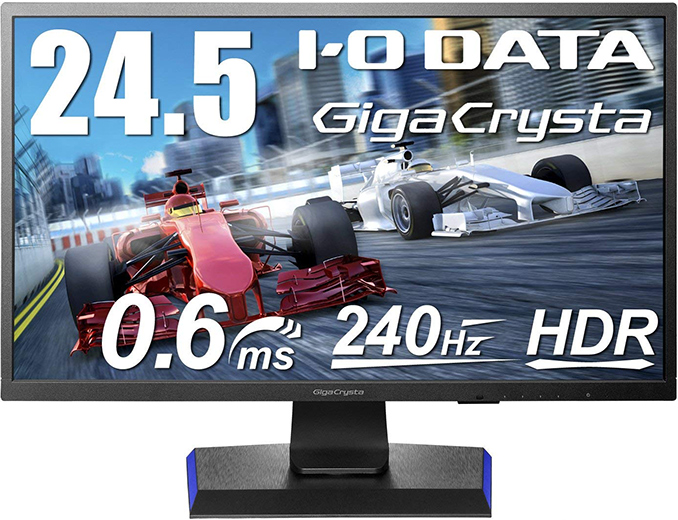
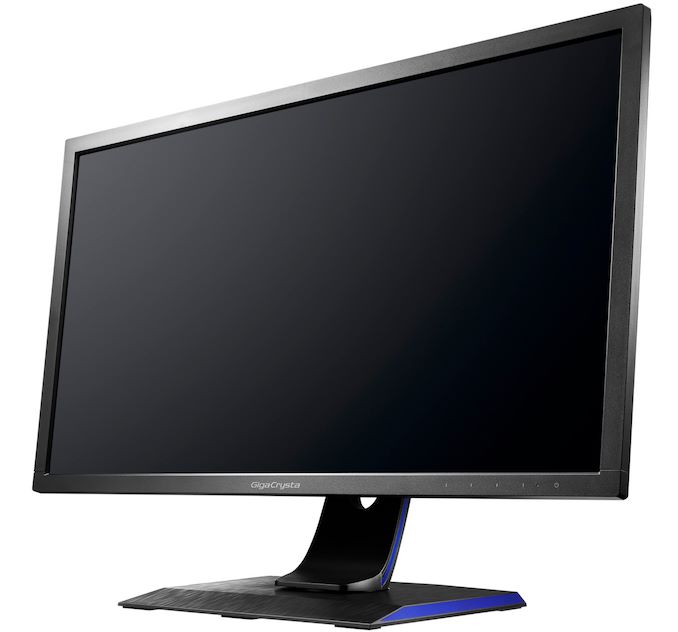

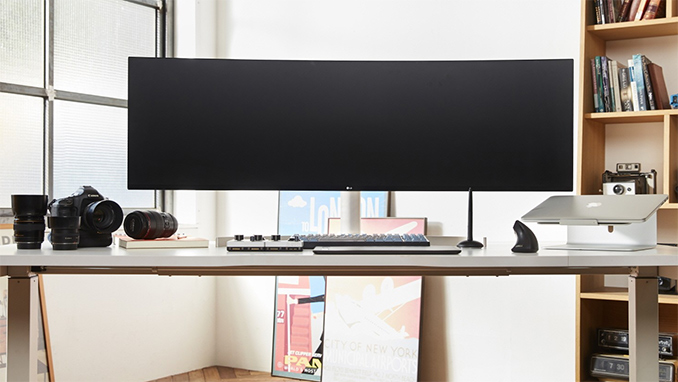
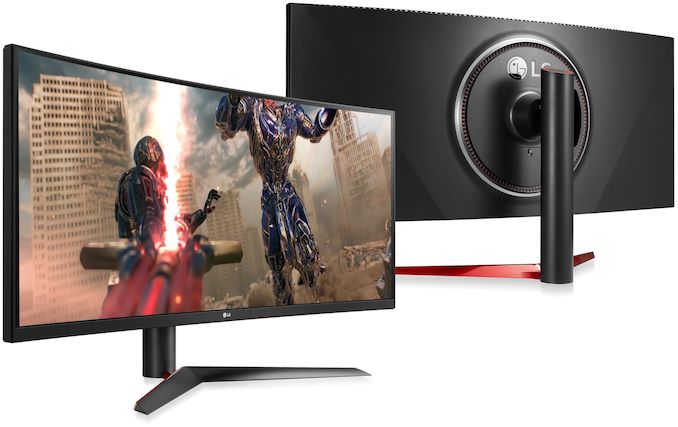



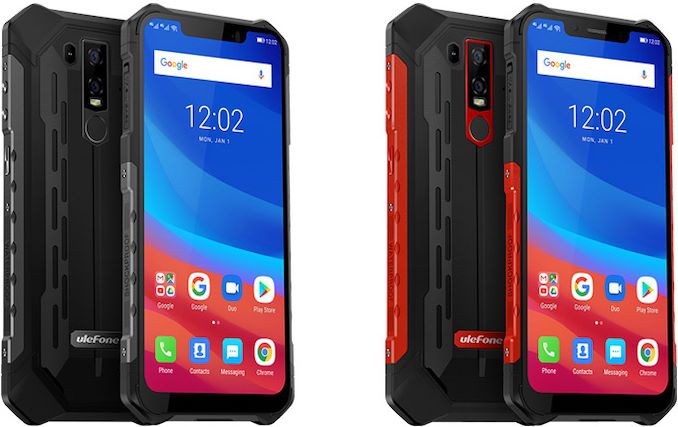
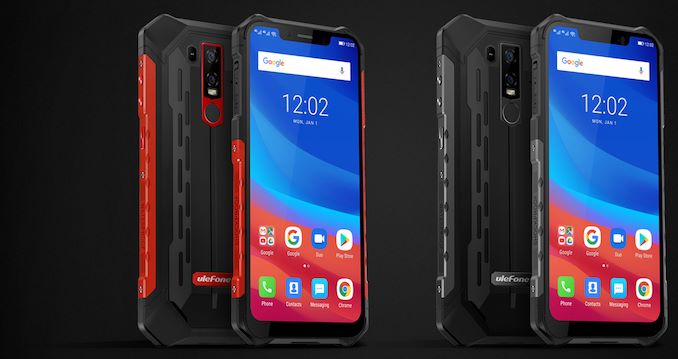


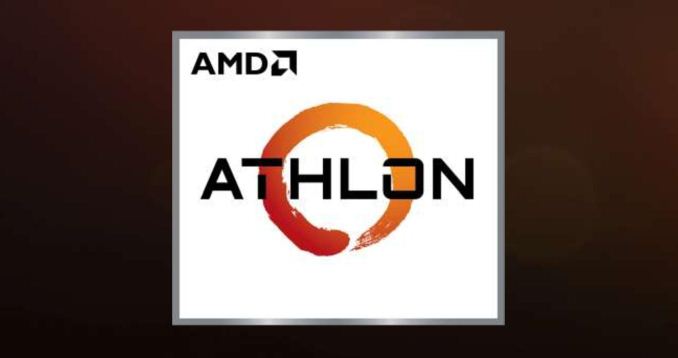
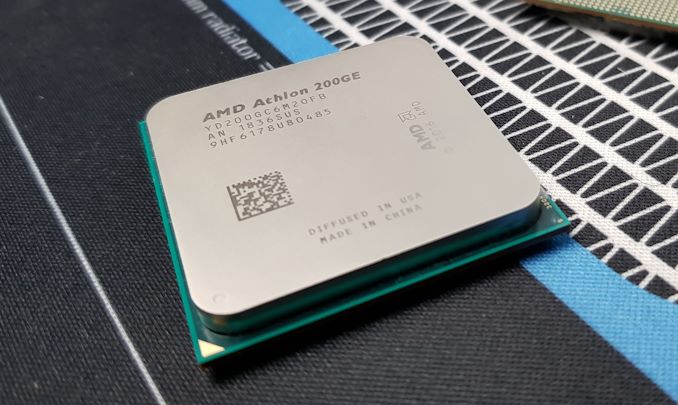


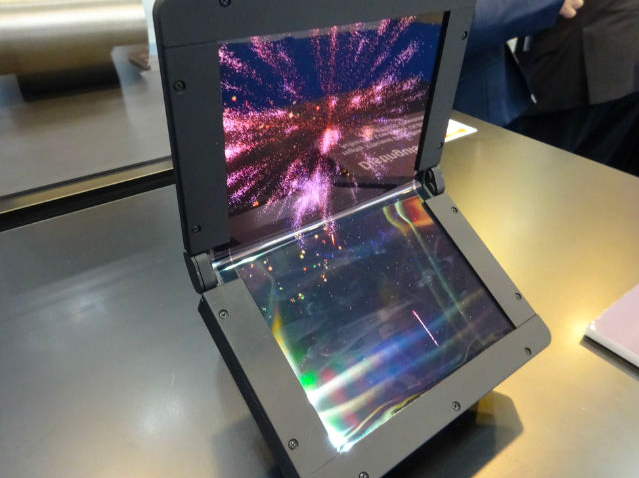
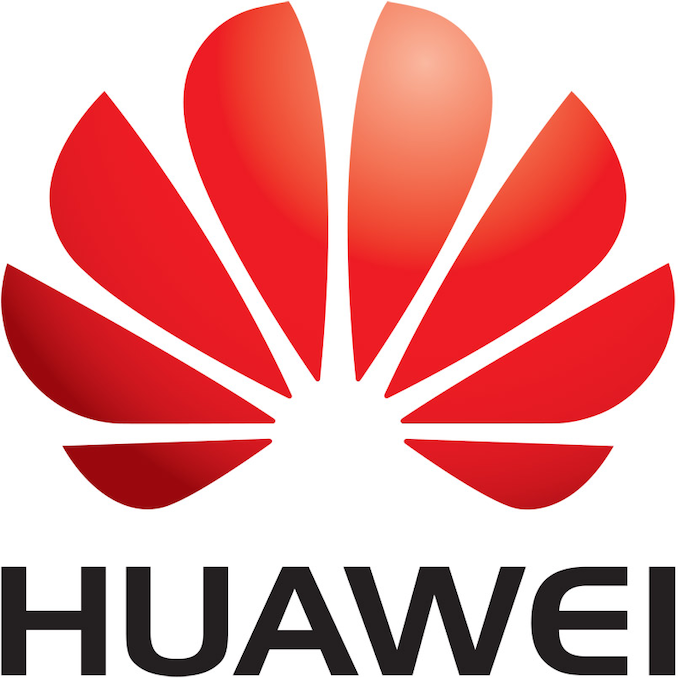

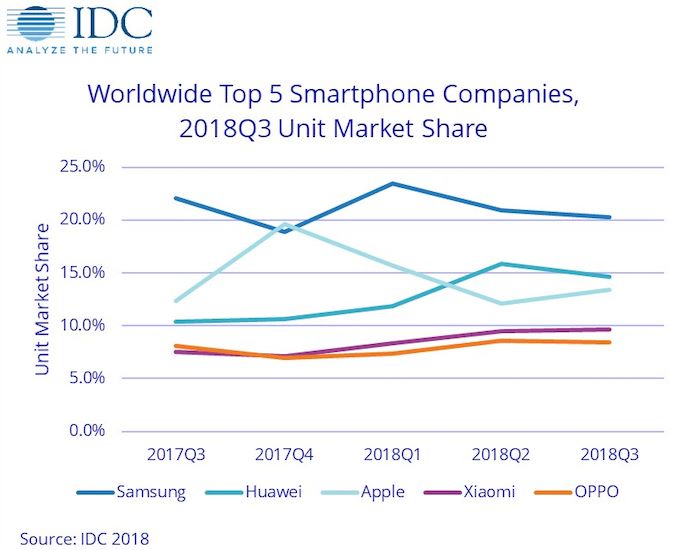
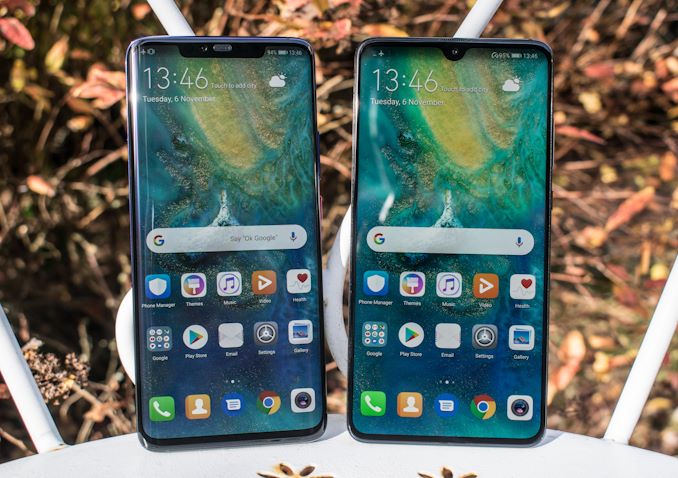
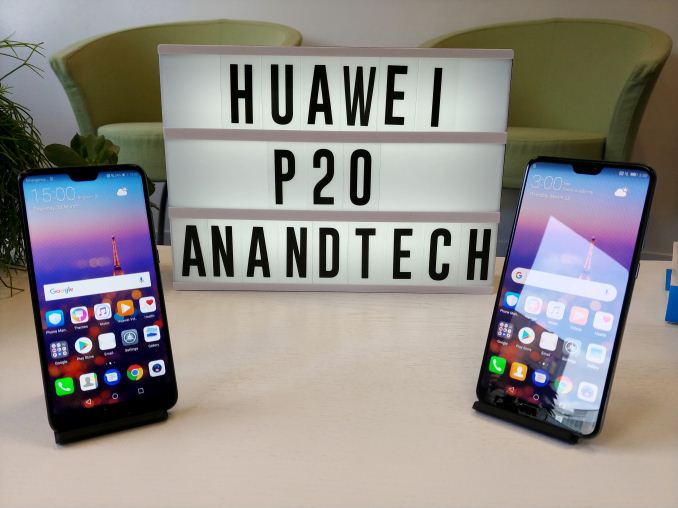
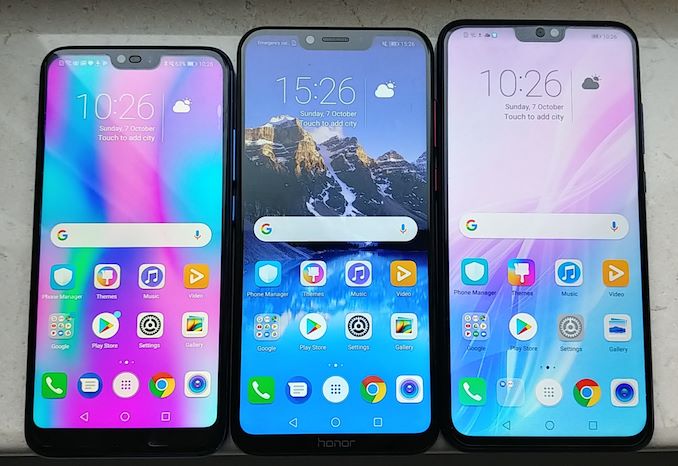
















Bookmarks